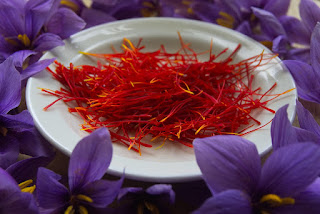Exploring the World of Exotic Spices: A Culinary Adventure
Introduction:
In the world of culinary delights, flavors play a significant role in tantalizing our taste buds and transporting us to distant lands. One of the keys to unlocking a realm of extraordinary tastes lies in the realm of exotic spices. These rare and unique ingredients hold the power to transform an ordinary dish into an extraordinary gastronomic experience. In this article, we delve into the captivating world of exotic spices, their origins, and the remarkable flavors they bring to the table.
A Journey through Spice Origins
Exotic spices have a rich history that dates back centuries. They were once prized for their rarity and were traded across ancient spice routes that connected diverse cultures. Let's embark on a journey to discover the origins of some popular exotic spices:
Saffron: Originating in the Mediterranean region, saffron is known for its vibrant crimson threads. Its delicate flavor and aroma make it the world's most expensive spice. Saffron comes from the crocus flower, and the labor-intensive process of hand-picking the threads adds to its value. Each flower produces only three threads, which must be carefully harvested. It takes thousands of these threads to yield a single ounce of saffron. Saffron is highly sought after in dishes like paella, risotto, and saffron-infused desserts, where it imparts a distinct golden color and a subtle floral and earthy taste.
Cardamom: Hailing from India and Sri Lanka, cardamom boasts a distinct sweet and floral taste. Its warm notes add depth to both sweet and savory dishes. Cardamom pods contain small, aromatic seeds that are often crushed or ground before being used in cooking. This versatile spice finds its way into curries, baked goods, and even beverages like chai tea. In Indian cuisine, cardamom is a key ingredient in the popular spice blend called garam masala, while in Scandinavian baking, it lends its unique flavor to traditional treats like cinnamon rolls and gingerbread cookies.
Vanilla: Native to Mexico, vanilla is synonymous with indulgence. The aromatic bean is treasured for its sweet, creamy flavor, enhancing desserts and beverages worldwide. Vanilla beans are derived from orchids and undergo a lengthy curing process to develop their characteristic flavor. They are hand-pollinated, hand-harvested, and then fermented and dried to enhance their fragrance. From ice cream and custards to cakes and coffee, vanilla is a staple ingredient that brings warmth and richness to countless recipes. It is often used in both its whole form (beans) and as an extract or paste.
Exploring Exotic Spice Varieties
The world of exotic spices is as diverse as it is captivating. Here, we uncover some intriguing spices that have captured the attention of adventurous food enthusiasts:
Sumac: A staple in Middle Eastern cuisine, sumac delivers a tangy and citrusy flavor. Its crimson hue adds a vibrant touch to salads, meats, and dips. Sumac berries are ground into a coarse powder, which can be sprinkled over dishes as a finishing touch. Its unique tartness pairs well with grilled meats, roasted vegetables, and even hummus. In Middle Eastern cuisine, sumac is a key ingredient in the spice blend za'atar, which is often used as a seasoning for bread, vegetables, and meats.
Grains of Paradise: Originating from West Africa, these small, peppery seeds have a spicy and slightly floral taste. They are a delightful addition to seafood and grilled dishes. Grains of Paradise resemble black peppercorns and possess a complex flavor profile, with hints of citrus and warmth. They can be used whole or ground, adding a burst of aromatic spiciness to stews, marinades, and spice blends. In West African cuisine, grains of Paradise are used in traditional dishes like soups, stews, and sauces, adding a unique flavor dimension.
Tasmanian Pepper: This unique spice, native to Australia, provides a fiery kick with hints of fruity and floral flavors. It adds a distinctive punch to marinades and rubs. Tasmanian Pepper, also known as Mountain Pepper, comes from a shrub-like tree. Its berries are dried and ground into a coarse powder. With its intense heat and complex flavor, it adds depth and excitement to dishes like barbecued meats, sauces, and soups. In addition to its spiciness, Tasmanian Pepper also exhibits a slight numbing sensation, similar to Sichuan pepper, making it a truly unique culinary experience.
Embracing Exotic Spices in the Kitchen
Introducing exotic spices into your culinary repertoire can elevate your dishes to new heights. Here are some tips on how to incorporate these flavors into your cooking:
Start with small quantities: Exotic spices are often potent, so begin by using small amounts and gradually adjust to your taste preferences. This allows you to familiarize yourself with the unique flavors and ensure they complement the overall dish without overwhelming it.
Pairing wisely: Each spice has its own unique flavor profile, so experiment with complementary ingredients to create harmonious flavor combinations. For instance, the warmth of cardamom pairs well with cinnamon in baked goods, while the citrusy notes of sumac enhance the flavors of fresh salads. Consider the overall flavor profile of your dish and select spices that will enhance and complement the other ingredients.
Balance and moderation: Use exotic spices to enhance the overall taste of a dish, rather than overpowering it. Exercise moderation to strike the right balance. Remember, a little goes a long way, so use them sparingly and let their flavors shine through. Allow the exotic spices to be a highlight and a subtle enhancement to your dish rather than dominating its flavor.
Conclusion:
Exotic spices offer a passport to culinary exploration, enabling us to embark on a flavorful journey around the world without leaving our kitchens. By embracing these rare and intriguing ingredients, we can add depth, complexity, and a touch of magic to our culinary creations. So, step out of your comfort zone, embark on a gastronomic adventure, and let the captivating allure of exotic spices transport you to a realm of extraordinary flavors.






Comments
Post a Comment